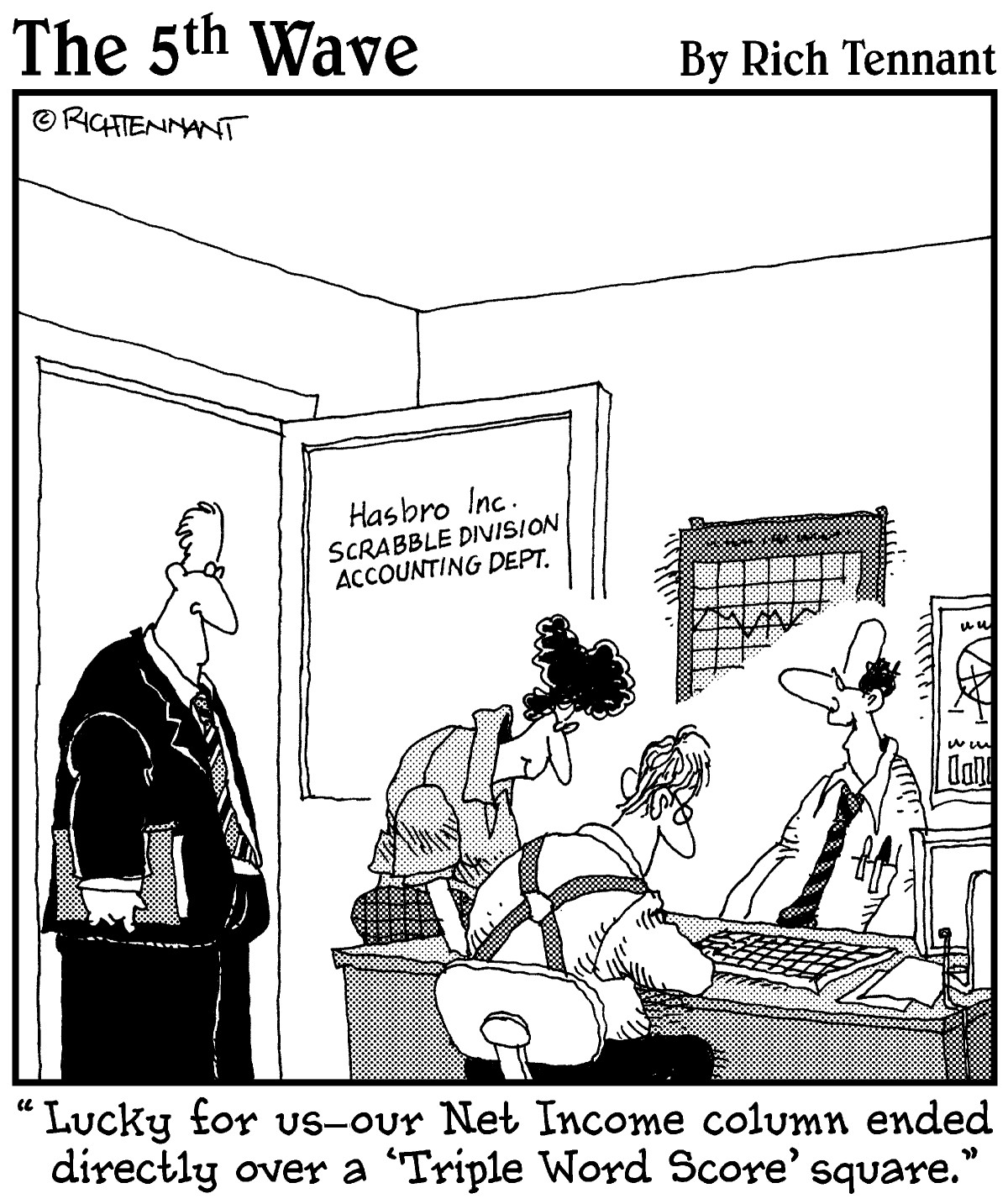Part IV
Investigating Income and Cash Flow

In this part . . .
This part gives you a comprehensive overview of how to prepare an income statement and a statement of cash flows. Companies use these two financial statements, combined with the balance sheet (which I discuss in Part III), as the basis to make important operating decisions. Potential investors and creditors also use them to decide whether they should do business with the company.
The income statement shows a company’s revenue and expenses, the ultimate disposition of which shows whether a company made or lost money during the accounting period. I discuss how the type of business causes the presentation of the income statement to change slightly, and I discuss each commonly shown section of the income statement. Finally, the income statement in all its glory is laid out on the table — from the entrée (gross revenues) to the dessert (net income after taxes).
The statement of cash flows records accounting transactions from both the balance sheet and the income statement, the purpose of which is to convert the accrual-based bookwork to the cash basis. This step is done so users of the financial statements can see how well the company is managing its sources and uses of cash. You find out about the three sections of the statement of cash flows — operating, investing, and financing — and what types of information you record ...

